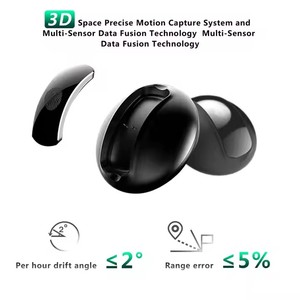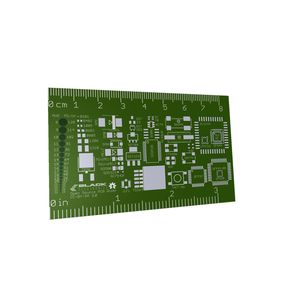
All categories
Featured selections
Trade Assurance
Buyer Central
Help Center
Get the app
Become a supplier

(3168 products available)




















































Real-time embedded systems are designed to control devices that perform dedicated functions within larger systems. These systems must respond to inputs or events within strict time constraints to ensure correct operation. Real-time embedded systems are categorized into two main types based on the timing constraints of their operations:
Hard real-time systems:
Hard real-time embedded systems have strict deadlines that must never be violated. The failure to meet a deadline can result in catastrophic consequences. These systems are used in safety-critical applications where timely responses are essential, such as in medical devices, automotive control systems, and aerospace applications.
Soft real-time systems:
On the other hand, soft real-time embedded systems have deadlines that are desirable to meet but not absolutely critical. Missing a deadline in a soft real-time system may degrade performance but not lead to system failure. These systems are used in applications where timely responses are important but can tolerate some flexibility, such as in multimedia systems, telecommunications, and industrial automation.
Real-time embedded systems are classified into two categories based on architecture:
Single-core real-time embedded systems:
Single-core real-time embedded systems have a single processing core responsible for executing tasks. These systems are simpler and easier to design, making them suitable for applications with well-defined real-time requirements. Single-core systems can be further classified into hard and soft real-time embedded systems based on the specified real-time constraints.
Multi-core real-time embedded systems:
Multi-core real-time embedded systems have multiple processing cores that can execute tasks concurrently. These systems offer increased processing power and can handle more complex real-time requirements. Multi-core systems can be further classified into homogeneous (all cores are identical) and heterogeneous (cores with different architectures) real-time embedded systems.
Hardware
The microcontroller or processor should be dusted regularly to avoid the accumulation of dust that may affect its performance. The device should be in a ventilated environment to avoid overheating. Overheating can cause damage to the embedded system hardware, leading to costly repairs. The connections of the input/output ports should be inspected regularly to ensure they are not damaged and should be replaced when they wear out. The different embedded system hardware components should be organized to avoid clutter, making it easy to troubleshoot when an issue arises. The embedded system hardware should be updated regularly to ensure that the different components are running efficiently. This also helps the hardware embedded system to be compatible with the latest software updates and applications.
Software
Users should ensure that the software on the embedded system is updated regularly. This ensures the software remains compatible with the hardware and fixes bugs that may slow down performance. The performance of the software on the embedded system should be monitored. This helps users to identify when there is a performance drop and troubleshoot to find the cause and fix it. Users should also clean the software to delete unnecessary files that may take up space and slow down performance.
Power Supply
The power supply circuit should be inspected regularly to ensure it is not damaged and is functioning well. This also involves checking the batteries to ensure they are charged and replacing them when they wear out. Users should also clean the power supply circuit to avoid the build-up of dust that may affect its performance.
Real-Time Operating System
Users should ensure that the real-time operating system (RTOS) is updated regularly. This ensures that it is compatible with the embedded system and fixes bugs that may slow down performance. The performance of the RTOS should be monitored to identify when there is a performance drop and troubleshoot to find the cause and fix it. The memory of the RTOS should be maintained by deleting unnecessary files that take up space and slow down performance.
Networking
The connections should be inspected regularly to ensure they are not damaged. This involves checking the different network devices to ensure they are functioning well and replacing them when there are issues. Users should clean the network connections to avoid the build-up of dust that may affect their performance.
Choosing a real-time embedded system involves understanding the requirements and constraints of the target application. Here are some factors to consider when choosing a real-time embedded system:
Since most embedded systems are application-specific, replacing or upgrading them can be challenging. However, some general steps can be followed to ensure a smooth replacement. Before anything else, a DIYer needs to choose a new embedded system that meets the needs of the application. This includes functions like the processor speed and memory size.
To replace an old embedded system, a developer needs to:
Once the application software is installed, the embedded system should be tested to ensure that it is working.
Q1: What are the characteristics of real-time operating systems?
A1: RTOS has a small footprint and low overhead. It is designed for applications where timing is critical. The system is predictable and reliable, which means it can handle high-priority tasks without failure. RTOS is easily scalable and has a user-friendly interface. It supports multi-threading and provides a high level of security.
Q2: What are the advantages of real-time embedded systems?
A2: Real-time embedded systems are cost-effective and have low power consumption. They are reliable and have a long life. These systems are also versatile and scalable, which makes them suitable for a wide range of applications. They are also secure and provide a user-friendly interface.
Q3: What are the challenges of real-time embedded systems?
A3: The challenges include resource constraints such as power, memory, and processing speed. It is also difficult to ensure reliability and maintainability. Real-time requirements are hard to meet, and security is a major concern. These systems are complex and are developed within a short time frame.
Q4: What is the difference between hard and soft real-time systems?
A4: Hard real-time systems are critical because they must meet deadlines. Soft real-time systems have deadlines that are preferable to meet but not absolutely necessary.